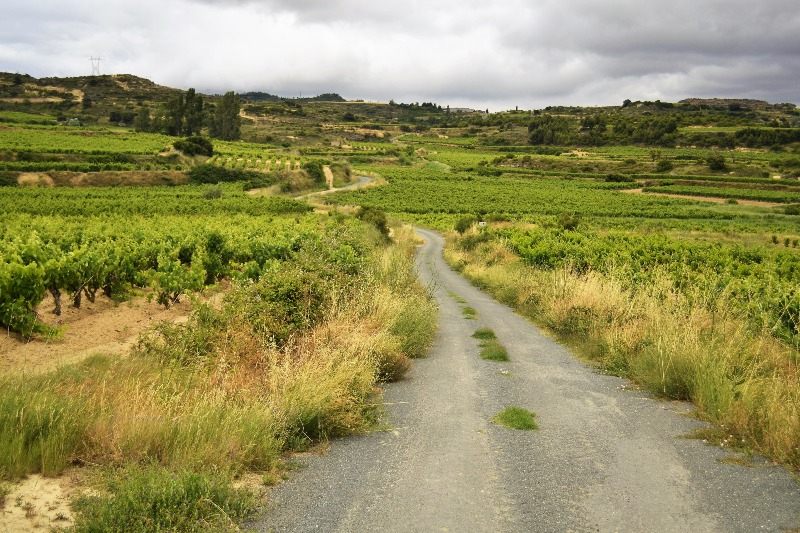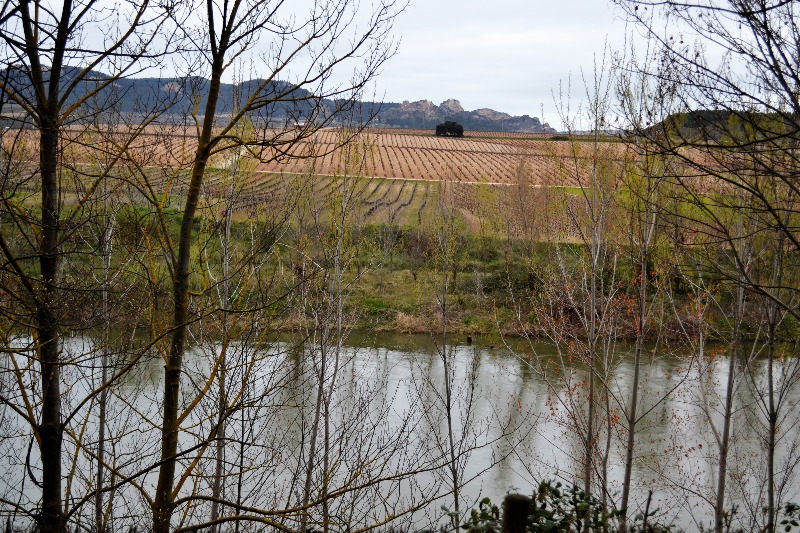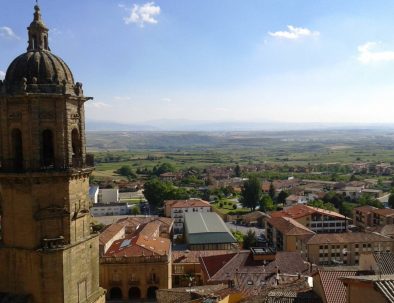
History of wine in Rioja
Rioja is Spain´s leading red wine-producing wine region. Its current reality is closely connected to its history. We introduce in this post some interesting facts about Rioja wine history … Read More
Grape and landscape are behind a great wine region and this is also the case of Rioja. In this article, we are going to analyze the terroir in Rioja and try to bring light to the question: why are wines from Rioja so good? If you do not believe the claim just made is correct, we will try to get you convinced!
Let´s start with some basics on the vine. Vine is “an easy” crop. It really has no exceptional requirements and can actually grow in many diverse soils. Having said that, not every soil can produce excellent wines. The term Terroir (Terruño) in Spanish, refers to the combination of elements that make it possible to ensure the highest quality in wines. A second aspect that is important to bear in mind is that the Rioja wine region is large. You can get an idea by looking at this map of the Rioja region. We cannot just speak of one single terroir in Rioja and things do get in fact a bit more complicated than that. This is great news! since we can expect more diversity too.

Vines are planted in Rioja in open plains, terraces, and hillsides. There is not a single type of soil and in general, they are not very fertile. This impacts productivity per vine, which is also low. Manure is traditionally added to improve the physical conditions of the soil. Humus develops and the activity of microorganisms in the soil grows.
The ph of the soils in Rioja is neutral, with a range that varies from 6,6 to 8,6. If we look at the different types of minerals present, we can find pebbles and rolling stones along the riversides. We can also find areas with mainly clay and mainly sandy soils.
A classical description of the type of soils in Rioja differentiates 3 types.
Calcareous and clay soils
These types of soils are found in Rioja on hillsides and terraces on the left bank of river Ebro on its way from Haro to Logroño (the left bank corresponds to Rioja Alavesa and the area known as La Sonsierra). With very scarce organic material and very alkaline, the soils in this area tend to be ochre and in the more chalky areas, they are almost white. The ochre color is due to the limestone
Ferrous-clay soils
On the right bank of the river Ebro (Rioja Alta) we find the second type of soils, ferrous-clay. The soil gets deeper. The pebbles and stones found on the surface are not so easy to crack as in the case of the calcareous soils we just described. The mother rock is very far from the surface. These soils tend to be reddish and are also very poor in organic materials. The red color is explained by the oxidation of mineral compounds, mainly iron. Clay is a material which in case of heavy rains becomes easily flooded unless there is good drainage. Due to the rain level in Rioja and the drainage in most plots, this type of soil can produce excellent wines in Rioja.
Alluvial soils
The third type of soil is alluvial. This is commonly found in the plains. The soil in these cases is formed by a succession of layers of clay, silt, sand, and gravel. Since the amount of stone and pebble varies from area to area, so does their fertility and the quality of the wines they can provide. These soils provide excellent conditions to produce high-quality wines when pebbles and rolling stones avoid the loss of heat from the soil. This energy that is not lost goes into the vines, and this helps in the high concentration of sugar and complexity of the grapes.
If we understand the terroir as a large conglomerate of many different aspects, including tradition, we can easily understand why the landscapes in Rioja and the architecture derived from winemaking have been put in the list of tentative Unesco heritage sites.

Altitude, latitude, type of soil, sun exposure (number of hours and intensity), topography, climate, and moisture. All these elements are “given”. The particular farming practices in the region do also play an important role. The selection of specific grape varietals would be included in this last item.
Since the area covered by the Rioja wine-producing region, we cannot speak of one single type of weather. The climate is mainly continental but has influences of both the Mediterranean (for the more eastern areas) and Atlantic climate on the north-west (despite the protection provided by the Sierra de Cantabria). La Sierra de Cantabria mountain range is very important in order to understand why grapes can ripen so well. Without this Sierra, the cold Atlantic winds would get to the vineyards and nothing would be the same!
Hot and dry summers and cold winters with moderate rain all year round (from 400 to 550 mm of rain per year)

In order to ensure the highest quality in grapes, irrigation is forbidden the 30 days prior to harvest. The case of water is in any case controlled though it is not totally forbidden during certain periods of the year (this varies from year to year) since as already described summers can be very warm and dry.
All in all, we can say that the climate in Rioja is excellent for wine production: not much rain, lots of sunlight, and very high-temperature variations between day and night. This last point is very important for the quality of the grapes since cold temperatures at night are very good for both the grape’s health and also to accumulate all the compounds the grape has synthesized during the hours of sunlight.
Another reason why Rioja can produce excellent wines has to do with people. Wine has had such an important role in the region that many people have made their living thanks to it for centuries. Local universities and technological centers train and form oenologists, engineers, and grape growers. This excellent degree of professionals does not end in grape growing or winemaking. Many other activities benefit from it, including the expertise of the tour guides that organize wine tours in Rioja.
The grapes in Rioja come from vineyards of vignerons and from estate vineyards. Grape growers are full time dedicated to this activity in most cases. The current economic model in place has enabled grape growers to live thanks to the care put into their vineyards. This has enabled a great amount of specialization and passion and dedication to the care put into single plots. A grower will walk day after day through the vine stocks, checking the evolution of vines and practicing tasks.
We can conclude on this by stating that growers have inherited the know-how and continue to receive continuous training to ensure they are updated with current practices and areas of improvement while tradition is respected.

The bodegas that purchase grapes from these grape growers also have a role to play. They control the process, provide with consultancy, and also with directions based on the type of wine they desire to produce. No matter the size of the winery, they will always want to make sure they get the best grapes from the grape growers. Due to the history of the region, it is not possible for most wineries in Rioja to
The Rioja control board also plays a very important role in the overall quality of the grape growing process. Besides the limitations implied by the climate, the control board in Rioja limits the yield per plot and provides directions in very diverse areas to ensure quality all the way around. These areas include the grape varieties clones that can be used, the rootstocks in places (they should be of low or medium vigor to control the yield), the adequate use of fertilizers, the use of correct pruning and vegetation management to also control yield or making sure that controls are put in place at the wineries to ensure grapes arrive in a healthy state.
We trust this post has been helpful in order to understand the terroir in Rioja and the impact it has in the production of high-quality wines in the region.

Rioja is Spain´s leading red wine-producing wine region. Its current reality is closely connected to its history. We introduce in this post some interesting facts about Rioja wine history … Read More

This post covers the best things to do in Rioja, Spain. Rioja is a fantastic place to visit- especially for those who like wine! Dotted with beautiful little wine towns, castles and churches, as well as fantastic tapas and wine to try, Rioja is a fantastic place to explore. … Read More
is proudly powered by WordPress